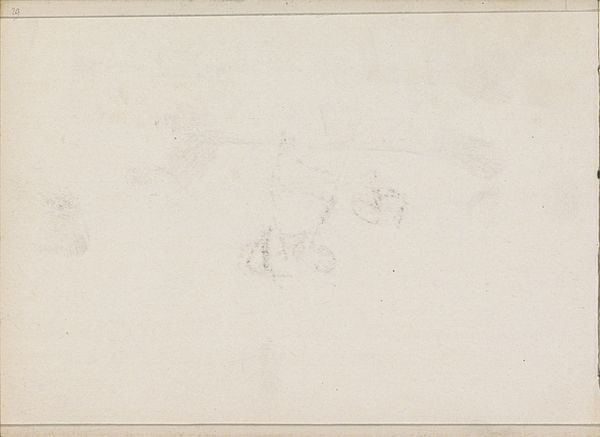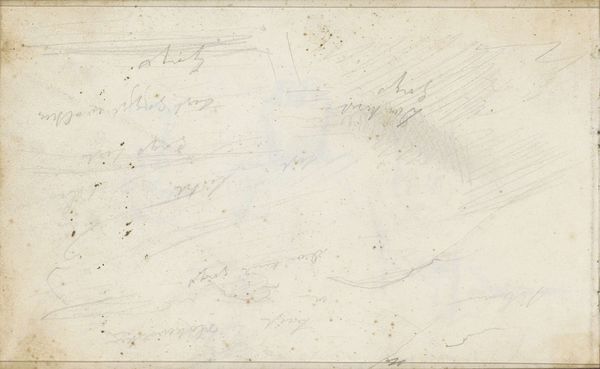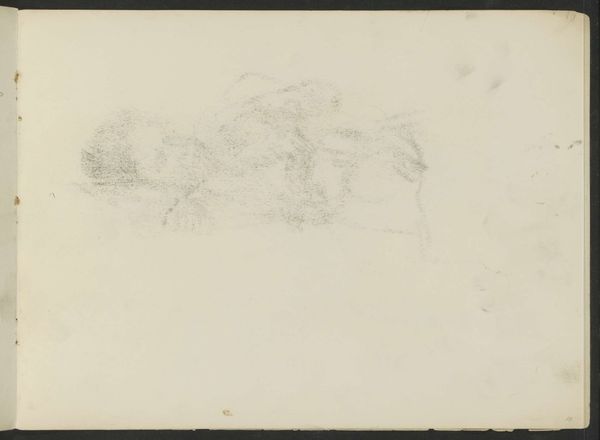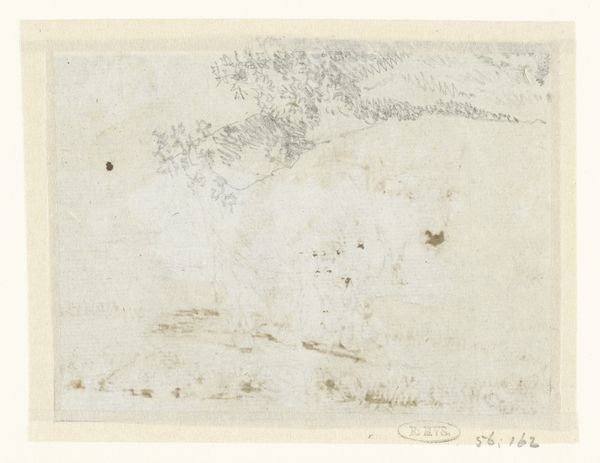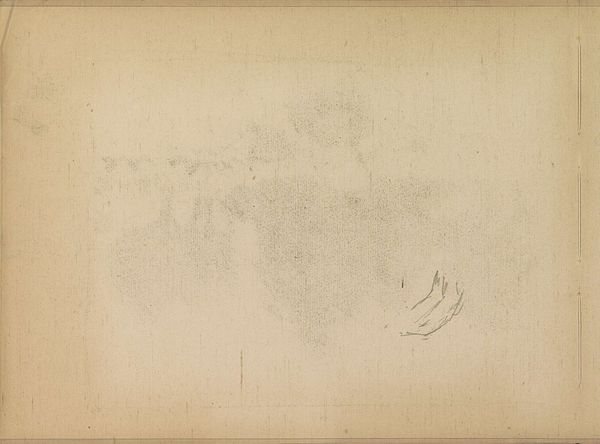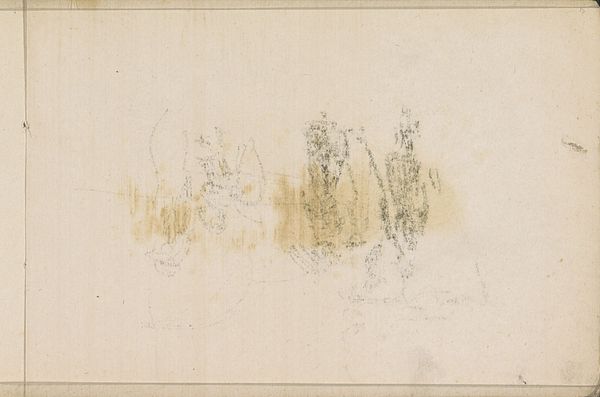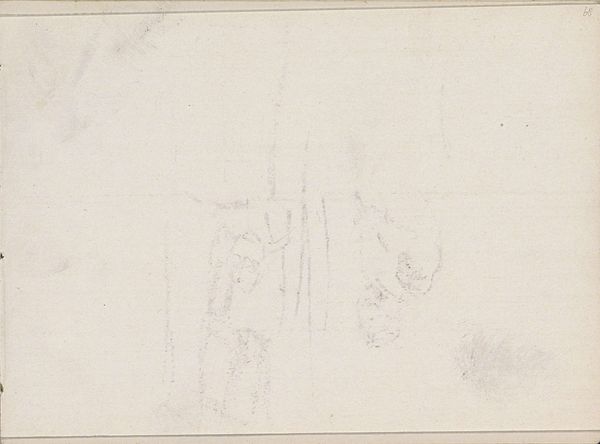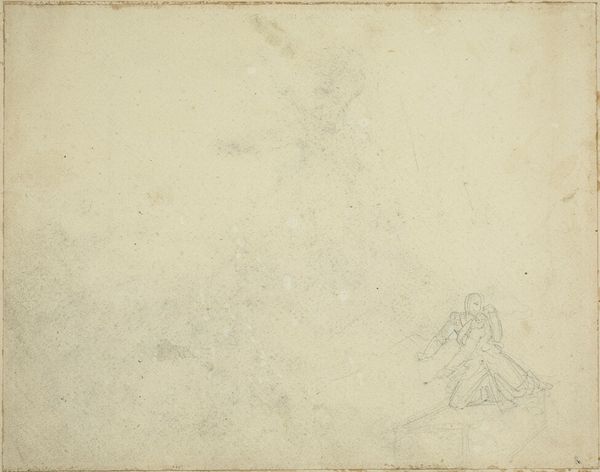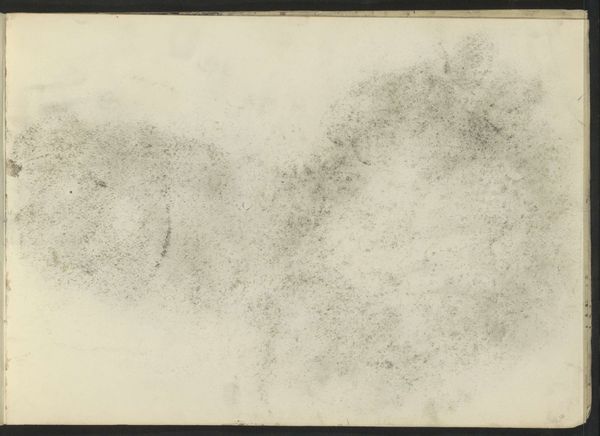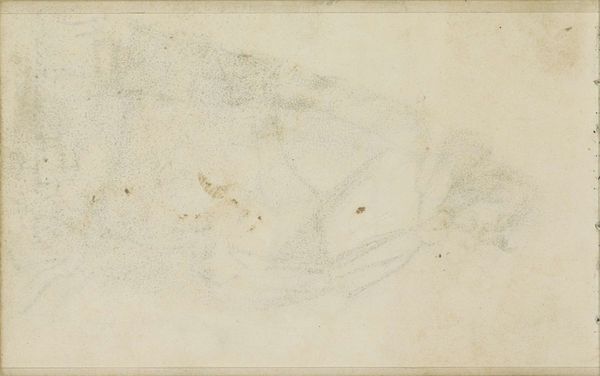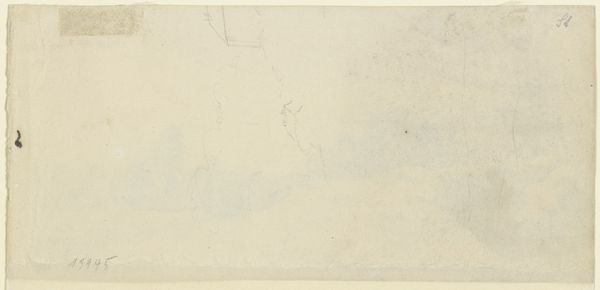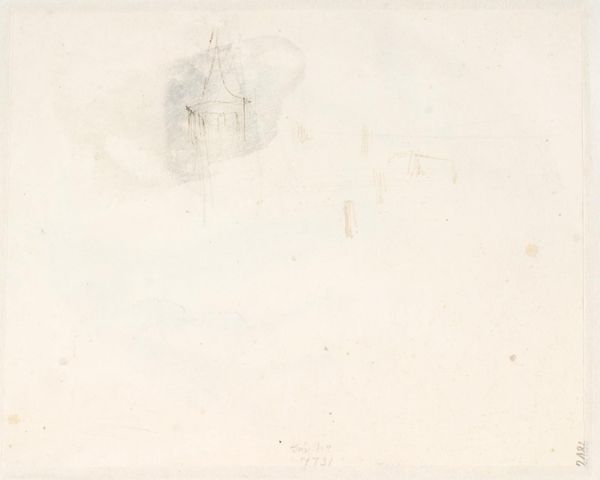
Copyright: Rijks Museum: Open Domain
Curator: Well, here we have "Abklatsch van de krijttekening op pagina 16" an intriguing watercolor and crayon transfer on paper by Isaac Israels, dating roughly between 1875 and 1934. It's currently residing here at the Rijksmuseum. Editor: Whoa, that's subtle. Almost ghostly. It's like looking at a half-remembered dream, all muted tones and vague shapes. I’m seeing a very faint cityscape emerging—is that right? The texture seems delicate, almost as if the paper itself could crumble with too much attention. Curator: Absolutely, the medium adds to that feeling of ephemerality. Israels employed a transfer technique to lift a crayon drawing onto this watercolor paper, which has a rich history in printmaking to replicate an original artwork and the symbolic act of duplication itself. Consider it also as the 'double' - a spectral version that haunts and echoes another 'real' image. Editor: The notion of a double makes a lot of sense here. You're right, it’s a method, but I immediately get more out of the idea of visual memory playing tricks. Look how soft everything is... I mean, you have to strain to really see. Maybe that suggests how transient urban scenes, as common place as they are, leave a more delicate footprint in our memory? Curator: Indeed, our understanding of a city is shaped by fleeting impressions and the traces of others that exist within our subconscious, even at times obscured. We bring our memories and experiences to this picture; our projection shapes the picture perhaps as much as the artist’s intention, what remains echoes the broader experience of the modern age. Editor: It really begs the question of what we choose to remember, and how imperfectly. Israels isn't giving us a grand monument; it’s more of a fleeting impression caught in time, softened, barely there. I appreciate the understatement. What do you think? Curator: Ultimately, what resonates with me is how Israels turns a simple act of reproduction into a poignant meditation on memory, the act of preservation, and perhaps most surprisingly how little, materially, survives in the transference. Editor: Precisely. I initially felt I wanted more detail but now find the abstraction far more compelling and truthful. It asks a lot from us as viewers. Thanks for shifting my perspective.
Comments
No comments
Be the first to comment and join the conversation on the ultimate creative platform.
